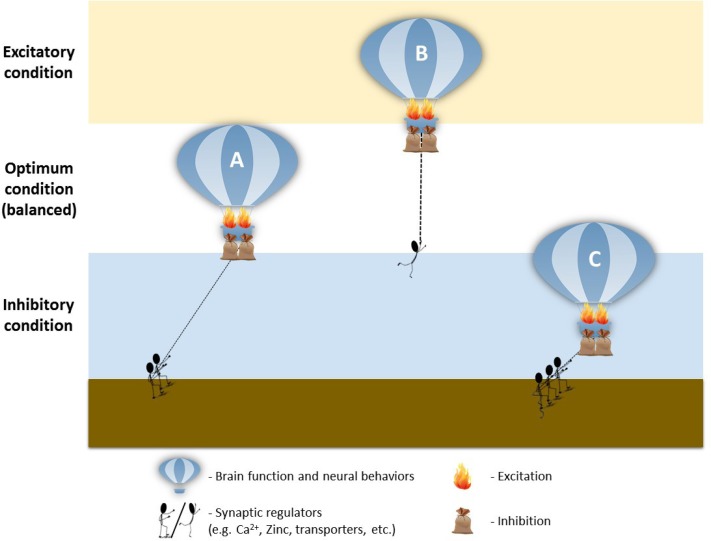Fig. 2.
Altered synaptic regulators in ASD leading to E-I imbalance. (A) Normal/optimum condition (balanced excitation, inhibition, and synaptic regulation). (B) Hyper-excitatory condition due to altered synaptic regulators. Even with the normal synaptic structure and numbers, dysregulation of synaptic modulators such as altered intracellular calcium level either by genetic or environmental factors may render the brain to more excitable states. (C) Hyper-inhibitory condition due to altered synaptic regulators, for example, reduced intracellular calcium level. With the altered synaptic regulators function, otherwise harmless weak stimuli (either genetic or environmental) may contribute to the manifestation of autistic phenotypes, which explains various types of gene (environmental) x gene (environmental) interaction. Alternatively, innate differences in the synaptic modulator functions between male and female may explain the gender-skewed prevalence of ASD.

